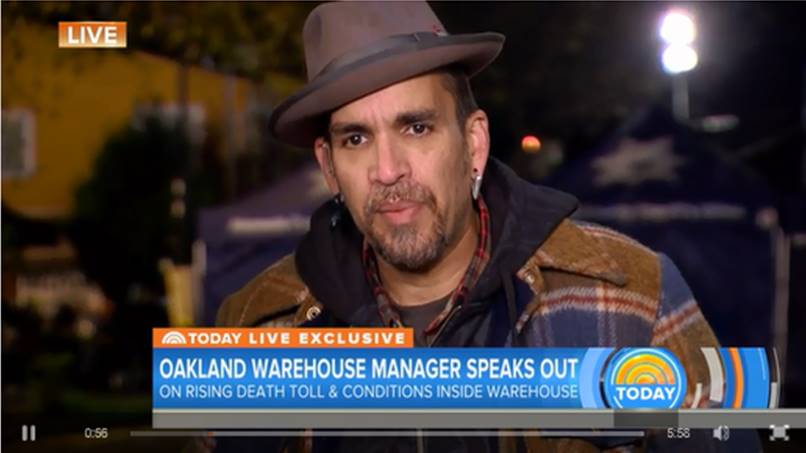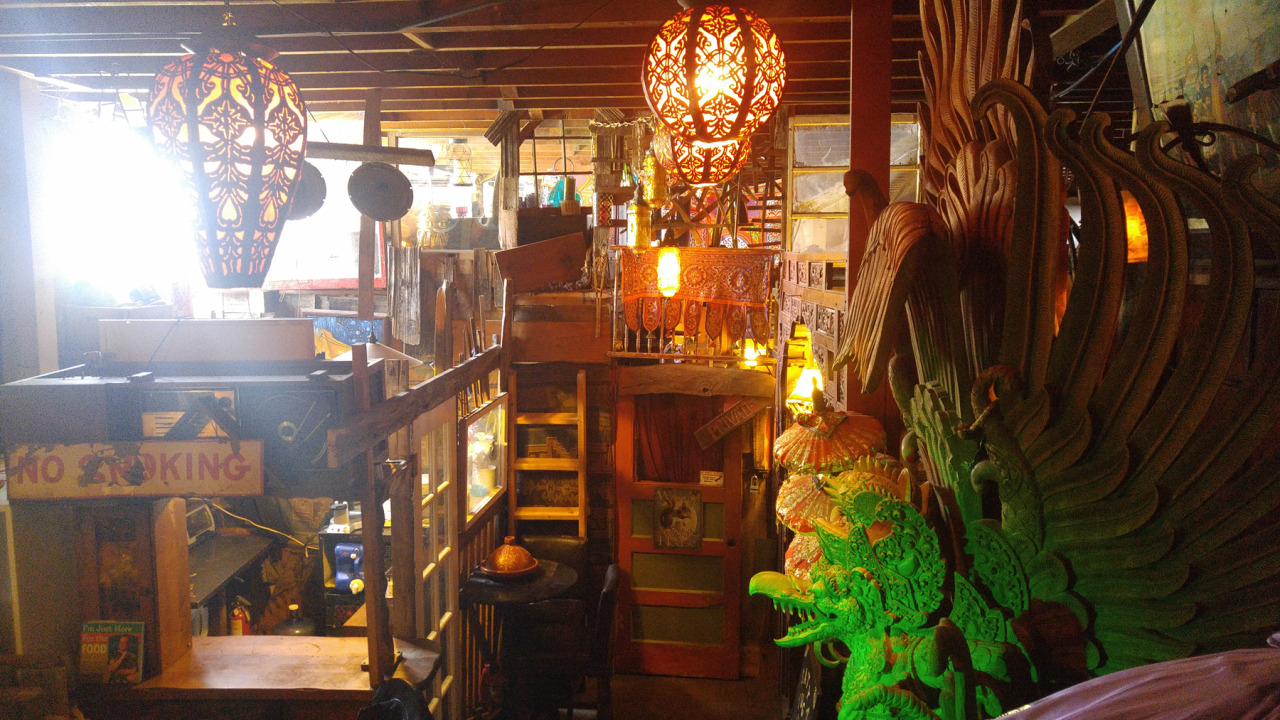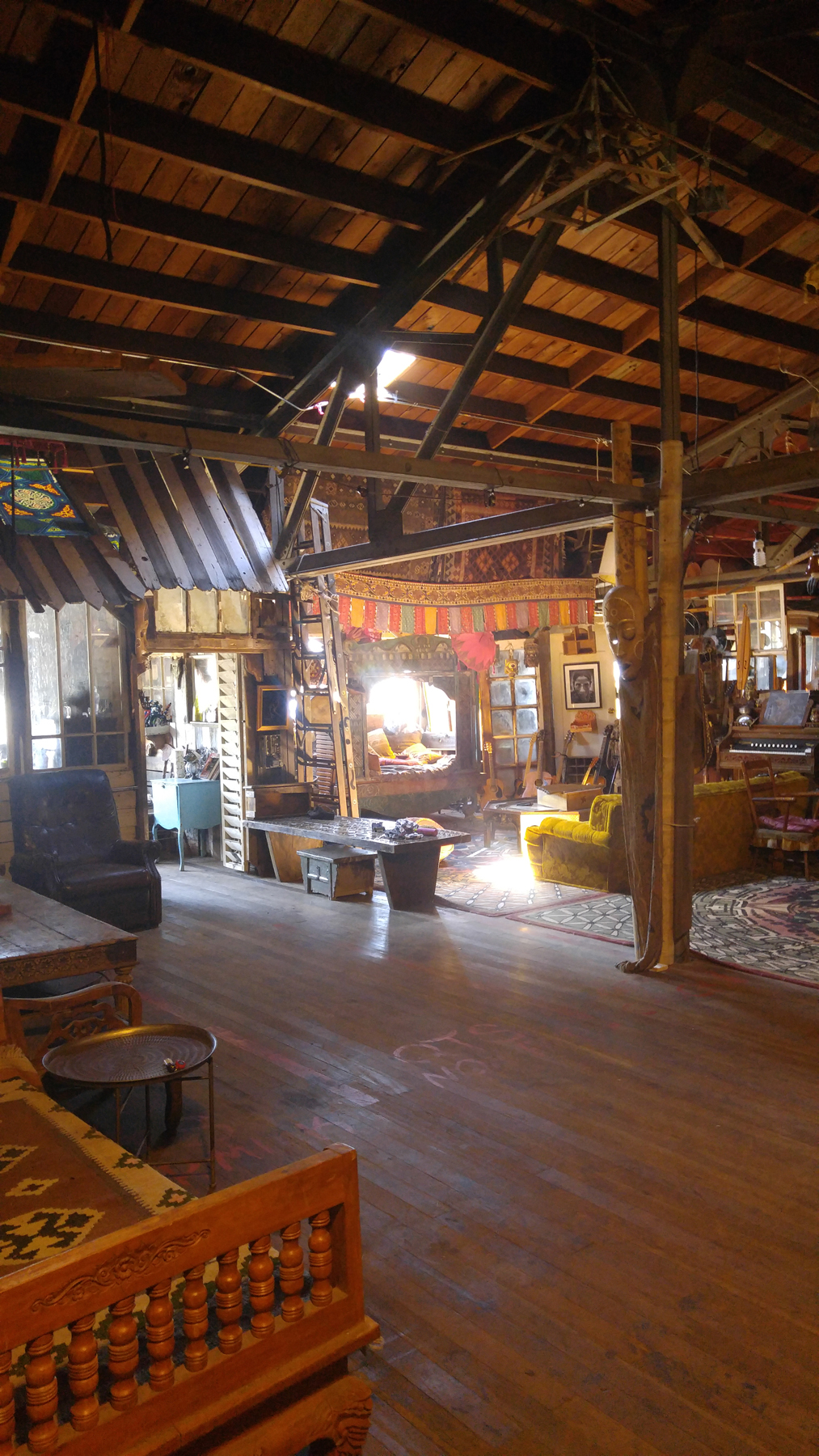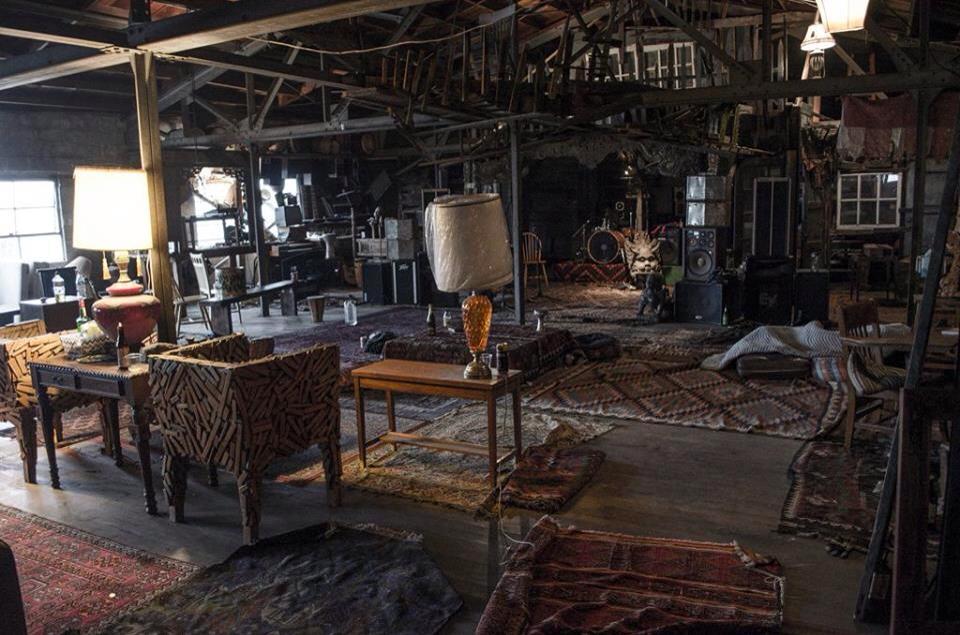
Ghost Ship manager interviewed on national news
The fire that killed 36 people in the two-story warehouse-turned-artist collective haven nicknamed the “Ghost Ship” and also underground dance party site is turning out to be one of the deadliest in recent history.
Such catastrophes underscore the importance of fire safety codes which have helped turn such mass causality occurrences into rare occasions.
The artists who lived in the rickety, debris-filled warehouse full of safety hazards, were drawn there for the art and bohemian lifestyle — but in the end it was nothing more than one gigantic death trap.
The community of dweller who lived there included tattoo artists, jewelry makers, painters, artist and sculptors. They all dubbed it as a nourishing space where creativity thrived but also provided a sanctuary in a city where ever-rising housing prices were constantly chasing artists away.

(Photos from the Ghost Ship website)
The problem unfortunately is that the warehouse was not licensed for such an occupancy, as the building was never designed to be used to host events or to accommodate those who lived there. The building was not equipped with fire sprinklers systems, fire alarms, or smoke detectors and only had two points of egress. The last permitted use of the building was as a warehouse, so neither habitation nor a concert would have been legal. It appears that the local code enforcement officers were unaware of its current use.
From pictures on the Ghost Ship website, most of the space appeared to be cramped with multiple flammable objects such as wooden pallets, antique furniture, 2×4’s, wooden lofts, tapestries, upholsteries, pianos, organs, yards of bright textiles, Persian rugs piled on the floors and other oddities. The rooms were divided by wooden walls in a maze-like fashion and the building construction appears to be masonry with wood trusses and wooden deck roofing, all of which contributed to one large fuel load inside the building once an ignition source was introduced.
In the pictures you notice the makeshift electrical accommodations of electrical cords snaking in around objects and throughout the wooden rafters. From eyewitness reports there were candles being used throughout the building with exposed electrical wires and even propane tanks being used to heat water for an improvised shower, since there wasn’t any running water.

A rickety, makeshift staircase made of wooden pallets led to the second floor and according to eyewitnesses it was very unsteady and could only handle two people at a time. A makeshift RV park was also located on the first floor where people lived and this also probably contributes to the mayhem during the fire.
Residents paid between $500 and $1,500 a month for spaces that jerry-rigged generators, lanterns, hot plates and space heaters. At night the building was dark which more than likely helped impede access to the two exits as partygoers and residents tried to navigate through the smoke and the fright. As tragic as it sounds, some of the victims however did manage to text loved ones with “goodbye” and “I love you” messages before they died.
Such tragic fires have become a rarity as a result of the safety measures that emerged at the turn of the 20th century, when fires at theaters and nightclubs where not so infrequent and killed hundreds of people at a time.
A multitude of fire codes have since been established and adopted, governed by the National Fire Protection Association designed to keep the public and businesses safe. When properly enforced, they save lives. When a deadly fire happens it is usually because something isn’t being followed, something goes wrong or there is something new to be learned.
From 1900-1954, there were 44 fires with death tolls of 100 or more; but today that may happen every other decade. From 1955 to present, there have been just five such incidents — of which two were from terrorist attacks from the 9/11 and the Oklahoma bombing, one from an inflight jet fire (Value Jet Flight 592), the Beverly Hill supper club fire in Southgate, KY in 1977 and the 2003 Rhode Island nightclub fire.
Those fires of yester-year and this weekend tend to have a few things in common: overcrowding, combustible interior decorations, inadequate exits or stairwells, the lack of a fire suppression system and then an ignition sources like candles, cooking, heating, cigarette or electrical wiring.

As a risk management and safety professional I would have to say that the greatest danger when it comes to fire safety is complacency and/or non-compliance for some very basic safety standards. People today just don’t believe that such a tragedy can still occur in this day and age.
As I listened to the manager of the Oakland warehouse, Derick Almena, talk to Matt Lauer from the Today Show, it appears as if he was still in a state of shock as he attempted to apologize for the disaster. Claiming that he lived in the building with his 3 children, he struggled to accept any accountability as he began to say that he didn’t build the building. He stated that he rented the building under the assumption that it met city standards, but it is clearly obvious that he didn’t recognize his duty of care to those who entered and used the building.
I would venture to predict that he also didn’t carry proper property insurance and liability insurance either, and if he did he misrepresented the intent of use of its occupancy because if inspected by the insurance company the policy would have been cancelled immediately.
I also would blame the landlord of the building as well. As he/she also had a duty of care to ensure that the building was being used as intended in the lease agreement, and I would suspect that it did not include hosting music venues and to rent out as a multi-family dwelling.
In my profession I have seen many like Mr. Almena, where they either lacked the competency to recognize the degree of risk or danger, or they simply failed to adhere or correct some very obvious safety exposures.
I have heard people use the excuse “well it’s never happened in the 30 years that I have worked here,” to “we are in the business to make money here I can’t slow down to correct that.”

The problem with such a stance is that it can be criminal if and when tragedy does strike. I suspect that Mr. Almena will either be charged with murder or involuntary manslaughter for his incompetency or flagrant disregard for life safety codes, building code violations and the safety and health of those tenants and guests. A plea of ignorance simply won’t dismiss the accountability, unless he can somehow be found mentally incompetent.
After such tragedies it’s important to understand that OSHA inspectors, government code enforcement officers, fire marshals, insurance inspectors, risk control consultants are not there to be a nuisance. They have a clear mission and that’s to keep people alive and safe from the likes of Mr. Almena.
In the years since the recession, the budgets for OSHA compliance officers and building-code enforcement officers have fallen significantly, so there are less funds available to operate to help enforce the safety standards that have been established to prevent such tragedies. So it’s important that everybody take ownership for their safety and surroundings, and pick up the phone when something doesn’t seem right, or if you see an obvious safety hazard.
We all share this earth together, and if somebody had just reported this obvious tender-box turned inferno of a warehouse, then just maybe the families of those 36 people could be doing something different than planning a funeral.
Be Safe My Friends

Keven Moore works in risk management services. He has a bachelor’s degree from University of Kentucky, a master’s from Eastern Kentucky University and 25-plus years of experience in the safety and insurance profession. He lives in Lexington with his family and works out of both the Lexington and Northern Kentucky offices. Keven can be reached at kmoore@roeding.com.
























